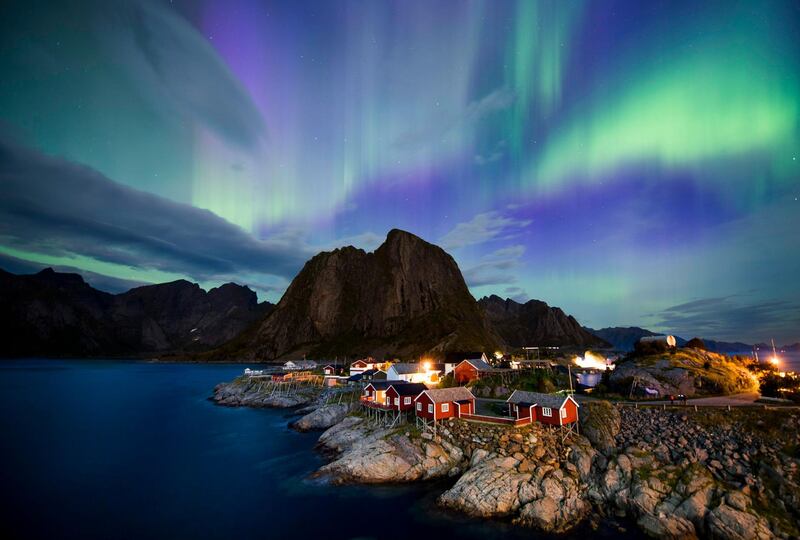“Oil revenues are going to be lower. We all must take responsibility”. Sober words from Erna Solberg, whose Conservative Party won a narrow victory in last week’s Norwegian parliamentary elections. As coalition talks begin, possible political partners have dramatically different views on the future of Norway’s petroleum industry, which contributes 22 per cent of the country’s GDP.
Yet Mrs Solberg's comments come as Norway's oil and gas sector is poised for a distinct upswing after years of decline. After falling nearly 50 per cent between 2001-13, oil production has since rebounded by almost 10 per cent. Gas output meanwhile is close to record levels. Total oil and gas production is expected to stay stable until 2025, an impressive outlook for a mature and high-cost area, and maintaining pressure on competing Opec states.
Norway’s rebound relies on two achievements. The first is the Johan Sverdrup field in the North Sea, 140 kilometres west of oil capital Stavanger. Discovered as recently as 2010 and due to come online in 2019, it holds between 1.9-3 billion barrels of reserves, one of the five largest oil fields ever found in Norway. The discovery of the field, in an apparently well-known area, was a clear win for the government’s policy of encouraging exploration via tax incentives.
_______________
Read more:
[ Pressure on North Korea could backfire with coal ]
[ China's CEFC buys into Russian oil major Rosneft ]
_______________
The second achievement has been exploration success in the Barents Sea, the Arctic waters lying off Norway’s far north coast. Long written off as an area containing a small number of high-cost fields, the region has recently seen a resurgence, with a number of significant discoveries, with estimates suggesting it could contain half of Norway’s total undiscovered oil and gas deposits.
In 2010, Norway and Russia finally reached formal agreement over their Arctic maritime border. National oil company Statoil is exploring in the newly-opened part of the Barents, as are Chevron, ConocoPhillips, Russia’s Lukoil, and BP’s Norwegian joint venture with Aker. Encouragement comes from the Russians’ giant Shtokman gas field, situated just over the boundary line.
But this ecologically sensitive area, bounded to the north by the Svalbard archipelago with its majestic glaciers and polar bears, has been the target of intense opposition campaigns from environmentalists.. Greenpeace and others have linked activity in the Barents Sea to the retreat of sea-ice, as global warming heats up the Arctic more than anywhere else. It’s worth remembering of course that burning a barrel of oil has the same impact on the climate whether it comes from the Arctic, Texas or Saudi Arabia, and that companies exploring the region are regulated much more strictly than fishing vessels in the same waters.
But the controversy surrounding the exploration of the Barents region has been nothing compared to the furious debate over allowing exploration off the scenic Lofoten Islands on the country’s north west coast. Some suspect the oil industry has been keen to encourage the prospect of exploration in the picturesque region, without hope of actually exploring there, as a way of drawing attention away from the Barents Sea.
This year’s election has divided along fissures in Norwegian public opinion on the energy sector. Norway has already said it will ban petrol- and diesel-powered cars by 2025, and has the largest share of electric vehicles in the world, helped by generous subsidies.
With virtually all its domestic power generation coming from hydropower, Norway is extending electric lines to offshore oil-fields to cut oil and gas consumption there. It is expanding its wind power industry and building long-distance cables to share renewable electricity with Scotland, Germany and other European countries. The country has also been researching capturing carbon dioxide from industrial facilities and disposing of it safely in its depleting offshore fields. Oslo has launched the world's first trial of carbon capture on its municipal waste incinerator.
In line with a vision of winding down the very petroleum industry that has helped make Norway one of the world’s wealthiest countries, the centre-left Labour party has wanted to increase oil industry taxation. The environmentalist Greens, who want the oil industry eliminated within 15 years, secured only one seat, the same one they won for the first time in 2013.
Though Labour won the most seats, 55, it is the Conservatives, with 48, who are likely to lead the governing coalition again, needing 85 for a majority. Ms Solberg has promised tax cuts to encourage growth. The right-wing populist Progress Party, with 29 seats, enthusiastically advocates drilling, including opening the Lofoten Islands, and pushing ahead in the far north. By contrast, the Liberals, who won nine seats and also formed part of the previous coalition, want to keep sensitive areas off-limits to exploration and reduce tax incentives to the oil business.
During the slump in oil prices, a fifth of the country’s oil industry’s workforce were made redundant and government revenue from petroleum fell 40 per cent. But the Conservative-led government has used the country’s sovereign wealth fund, with almost $1 trillion of assets saved from oil and gas revenues, to buoy the economy. Petroleum remains very important, but Norway is much less dependent on it than most producers.
Many Norwegians can contemplate with equanimity the end of their largest industry. This is a luxury not open to Nigerians, Angolans, Mozambicans or Libyans, in all of whose countries Statoil invests. This comfortable situation, cushioned by abundant oil savings and petroleum-funded national development, might be seen by some as irony, by others as the fruits of good management.
Robin Mills is CEO of Qamar Energy, and author of The Myth of the Oil Crisis






